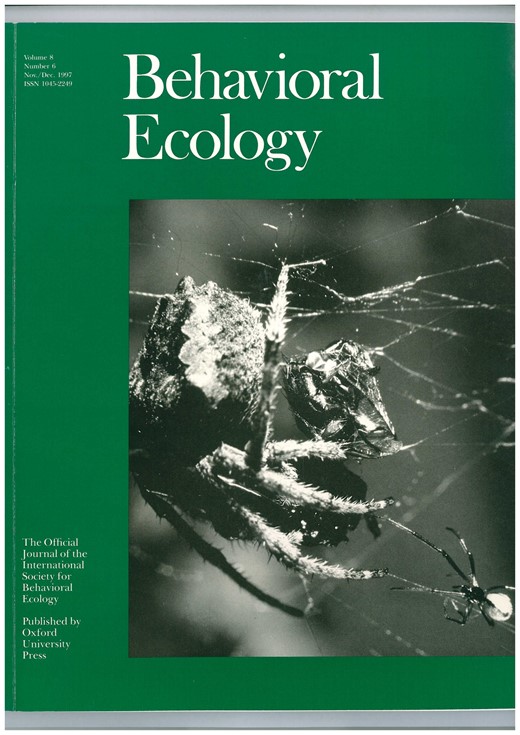-
PDF
- Split View
-
Views
-
Cite
Cite
Henri Weimerskirch, Thierry Mougey, Xavier Hindermeyer, Foraging and provisioning strategies of black-browed albatrosses in relation to the requirements of the chick: natural variation and experimental study, Behavioral Ecology, Volume 8, Issue 6, November 1997, Pages 635–643, https://doi.org/10.1093/beheco/8.6.635
Close - Share Icon Share
Abstract
We studied regulation of the food supply to black-browed albatross chicks at Kerguelen by simultaneously recording the provisioning rates achieved by individual parents and satellite tracking foraging birds during two seasons, by studying changes in adult mass, and by experimentally manipulating the food requirement of chicks. In 1994 black-browed albatrosses had a higher breeding success and produced heavier chicks that grew faster than in 1995. They spent a similar time foraging but brought heavier meals to their chick in 1994. Satellite tracking indicated that in both seasons birds foraged in the same oceanographic area, 250 km from the colony. Travel times to and from this area remained unchanged, and similar times were spent foraging there. In our study area, black-browed albatrosses appear to rely on a food resource that is predictable in location, but whose availability varies from one year to the next. The principal difference between years of differing food availability was that birds brought larger meals when food was more abundant Costs of commuting to nearby feeding areas are probably low and allow the delivery of energy to the chick at a high rate. A study carried out in 1991 indicated that there was no relationship between the changes in adult mass from one trip to the next and the duration of foraging trips or feed mass, suggesting that adult body condition had little influence on the provisioning strategy of this species. An experiment whereby some chicks were deprived of food and others received supplementary food showed that parents of underfed chicks spent the same time foraging and brought slightly larger amounts of food to their chicks as control parents. We suggest that parents are searching for food to the maximum limits of their ability and thus cannot reduce further foraging time, but underfed chicks can swallow more food. Parents of overfed chicks delivered less food and increased the time between feeds. The reduction in provisioning frequency is interpreted as the capacity of parents to modify their foraging behavior according to the nutritional status of the chick, but the reduction of feed mass is probably the result of chicks being close to their maximum assimilatory capacity. Comparison between Procellariiform species indicates extensive differences in the degree to which parents can regulate the supply of food to their chicks. Neritic species like black-browed albatrosses appear to have a reduced ability to regulate, and especially to increase provisioning rates, whereas more pelagic species may have a greater regulation ability



